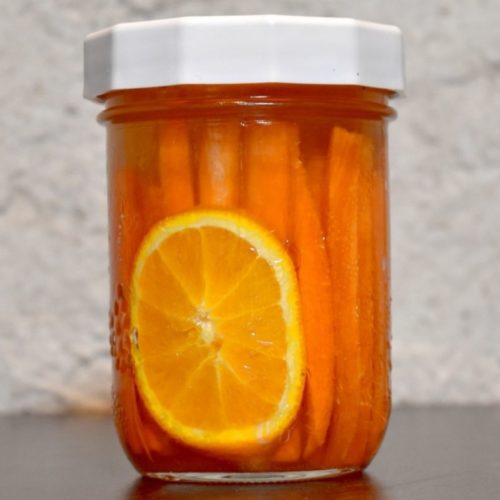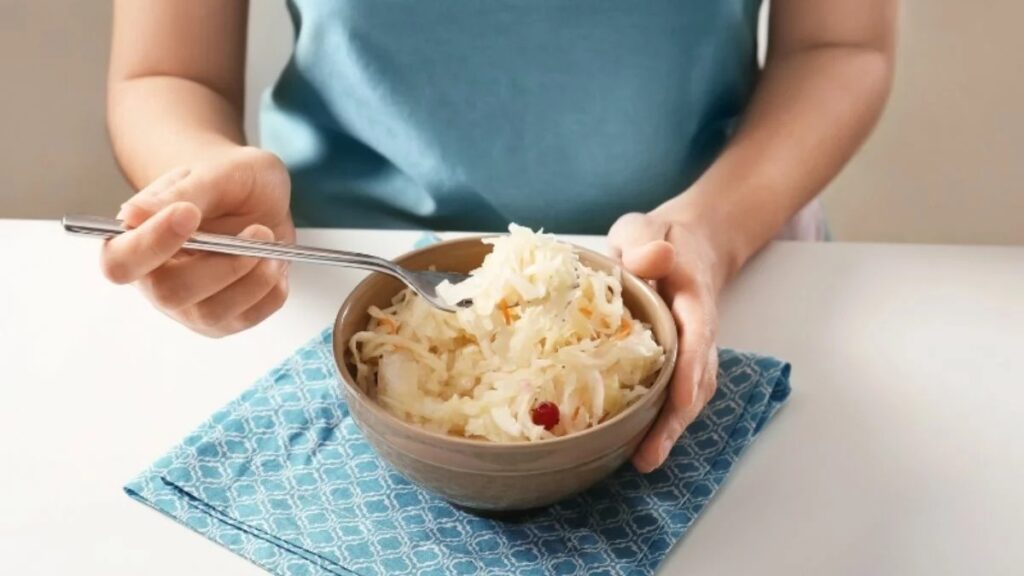These crunchy little sticks of fermented orange carrots stand out for their simplicity and their delicious taste.
Use them to make chewable crudités as soon as the urge for a “crunch” takes hold. Warning – these fermented carrots tend to disappear very quickly, especially around happy hour.
A fermented carrots recipe you will want to do again, and again, and again!
- Difficulty level: easy
- Type of fermentation: lactic
- Preparation time: 20 minutes
- Fermentation time: 3 to 8 weeks
The jars (or other containers) that you are going to use for fermentation are the basis of the recipe because the amount of added salt is calculated according to their volume.
Here we give you an example that works well for this kind of recipe, but don’t hesitate to change the size and type of container (see all of our material for making fermented vegetables). You will only have to adjust the amount of salt proportionally to the new volume of the container.

Fermented Orange Carrots Recipe
Equipment
- 2 2-cups Mason Jars (Wide Mouth is best)
Ingredients
- 900 g carrots (or enough to fill two 500ml jars)
- 20 g salt
- 2 teaspoons black pepper
- 2 slices orange (with the peel)
- Enough water to cover the carrots
Steps
- Pour 2 teaspoons of salt (10 g) into each jar.
- Add the pepper.
- Peel the carrots and cut them into sticks.
- Slide an orange slice down the side of each jar (to make it pretty).
- Stack the carrot sticks vertically until they are firmly packed and cannot rise during fermentation.
- Pour in water to submerge the carrots (nothing should stick out).
- Close and stir the jars to dissolve the salt.
- Make sure the lids are not too tight, so that the pressure can release naturally during fermentation.
- Place the jars on a small plate to collect any excess liquid.
- Leave to ferment at room temperature for about 3 weeks (or more).
- Open the jar and enjoy!
The sticks should have a nice crunch and just enough tangy citrus flavour!

The fermented carrots can be kept for 1 year in the refrigerator and even longer. However, over time the carrots will become increasingly soft, but will remain just as good to eat.
On salt: Brine and its percentages can cause many headaches for amateur fermenters. This technique is simpler and more precise: take the volume of the jar, then multiply by 2%. This gives the amount of salt to add: 500ml x 2% = 10g of salt. So, you need 10g of salt (2 teaspoons) for every 500 ml!

